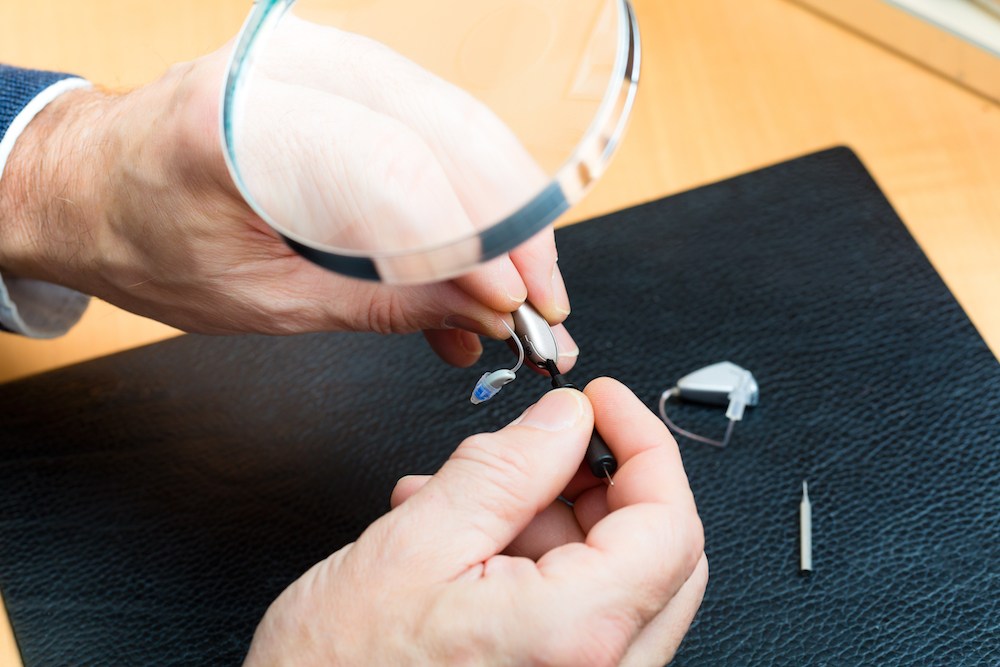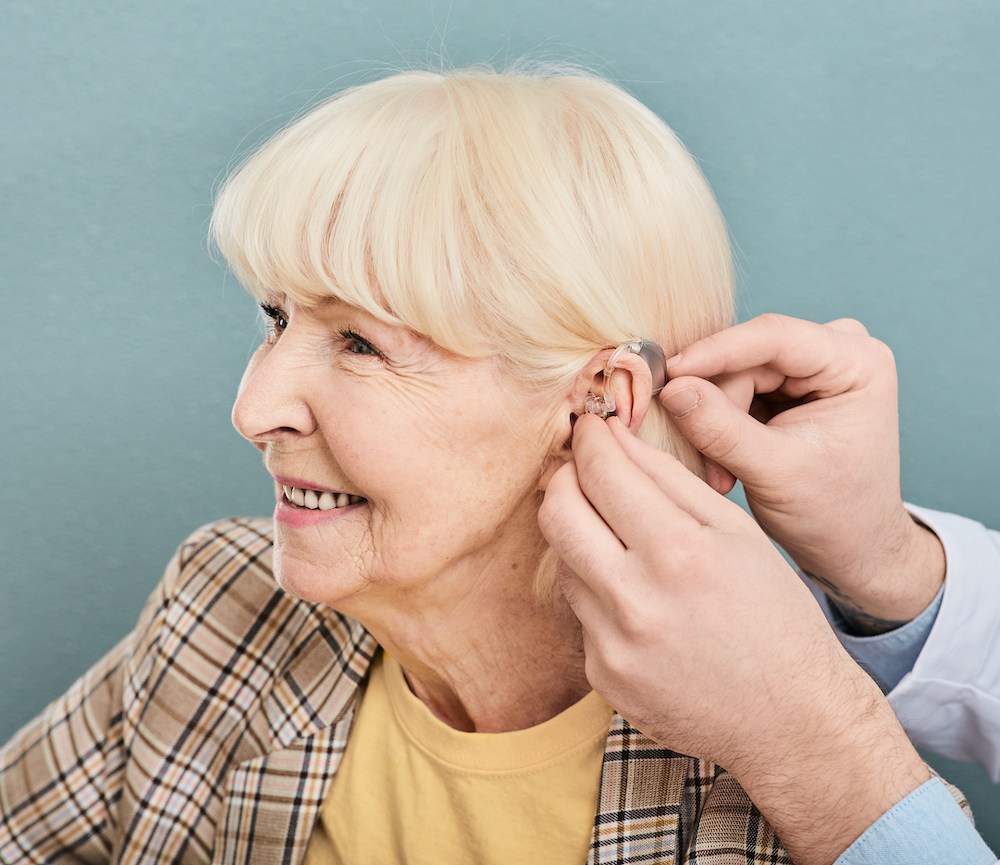The Impact of Autumn Weather on Hearing Aids
Autumn weather brings changes that can affect how well your hearing aids

By: admin | October 20, 2025
Autumn weather brings changes that can affect how well your hearing aids work, even if you haven’t run into problems before. The shift from warm summer temperatures to cooler fall days creates moisture from condensation, and activities like raking leaves or hiking through wet trails expose your devices to rain, humidity and debris. These conditions can interfere with how your hearing aids perform, causing static, reduced volume or complete malfunctions if moisture gets into the wrong places. Wind and temperature drops also mean you’re more likely to wear hats, scarves and hoods that can knock your devices loose or create feedback issues.
Taking care of your hearing aids during autumn doesn’t require complicated routines or expensive equipment. It’s about recognizing that seasonal conditions put different demands on your devices and adjusting your habits accordingly. When you’re proactive about protecting your hearing aids from moisture, temperature swings and outdoor elements, you reduce the need for professional hearing aid repairs and extend the life of your investment. Fall is also a good time to check in on your maintenance routine since the weather only gets harsher as winter approaches. A few simple adjustments now mean you won’t be dealing with devices that stop working in the middle of a busy day or during important conversations.
Hearing aids are designed to capture sound from your environment, process it and deliver it in a way that matches your specific hearing needs. Sounds enter the device through a microphone and are converted into digital signals that the hearing aid can adjust based on your hearing profile. These signals are then amplified and sent through a speaker into your ear canal, allowing you to hear soft, moderate and loud sounds more clearly. The device works continuously to balance different sounds so that speech is easier to understand while background noise is managed.
Modern hearing aids also include features that help you adapt to a variety of listening situations. Some adjust automatically to changes in your environment, like moving from a quiet room to a busy street, while others allow you to manually control volume or settings. The combination of amplification, sound processing and customization helps you maintain clearer hearing in daily life. Understanding how these devices function can make it easier to use them effectively and appreciate the role they play in supporting communication and daily activities.
Weather can affect how electronic devices perform, including hearing aids, in a variety of ways. High humidity, rain or extreme temperatures can influence internal components and the battery, sometimes causing devices to function less efficiently or temporarily stop working. Moisture can accumulate in small openings, while sudden temperature changes may affect circuitry or the sensitivity of microphones and speakers.
Even mild weather conditions can have subtle effects on technology. For example, prolonged exposure to heat can reduce battery life, while cold temperatures can make components feel less responsive. Understanding that environmental factors can influence device performance helps you take practical precautions and be aware of potential challenges, ensuring your technology continues to function reliably throughout everyday conditions.
During autumn, you will likely experience cooler days, shorter daylight hours and more frequent rain or fog. Mornings often start off chilly, while afternoons can still feel mild. These shifts in temperature and moisture can vary from day to day.
Windy conditions and falling leaves are also common, bringing extra background noise when you are outside. Being aware of these typical changes helps you prepare for any adjustments needed with your hearing aids.
Sudden changes in temperature can affect how electronic devices like hearing aids work. Moving quickly from warm to cold environments or vice versa may cause condensation inside your device, which can impact performance.
Moisture from these temperature shifts can lead to short circuits or faster battery drain. Keeping your hearing aids dry and stored properly during big weather changes helps protect their sensitive parts.
Moisture in the air, including rain, fog or high humidity, can have a real effect on hearing aids. Water can get into small openings or electronic parts, which may cause your devices to work less effectively or even stop temporarily.
You may notice static sounds, weak battery life or trouble with sound quality during damp weather. Thinking ahead about how autumn brings more wet days and higher humidity can help you plan. Keeping your devices dry and clean is key to protecting them from these seasonal changes.
Rain and fog present their own set of challenges for hearing aid performance during autumn. Moisture from these conditions can get into the small parts of your hearing aids, causing static, muffled sound or even temporary loss of function. Foggy days bring high humidity, which makes it easier for water droplets to collect on your devices.
To help keep your hearing aids dry when rain or fog is in the forecast, consider using a protective cover or drying case at night. With a little extra attention, you can still enjoy clear sound and reliable performance even on damp autumn days.
Windy days often make hearing aid microphones pick up extra noise, which can be distracting or uncomfortable. The sound of wind blowing across the microphone may cause a rushing or whistling noise that makes it harder to hear conversations clearly.
Some hearing aids have wind noise reduction features, but strong gusts can still be tough to manage. Wearing hats, headbands or using wind covers designed for hearing aids can help block some of the wind before it reaches the microphone. These small adjustments may make outdoor activities more pleasant and support better hearing during blustery autumn weather.
Dry autumn air can lead to more static electricity, especially when you wear hats, scarves or certain fabrics. This static can sometimes cause your hearing aids to make crackling sounds or stop working for a short time.
Static electricity builds up more easily when the air has low humidity. Touching your hearing aids after removing a hat or sweater may transfer this static charge and temporarily affect how your devices work.
Battery life in hearing aids can change as temperatures shift during autumn. Colder weather may cause batteries to drain faster than usual, while warmer indoor air can sometimes help them last a bit longer.
Some common reasons for battery changes during the season include:
Hats and scarves are a staple of autumn attire, but they can sometimes interfere with hearing aids by shifting them out of place or causing extra static. To keep your devices comfortable, choose looser hats or scarves made from soft, natural fabrics that put minimal pressure on your ears. Gently place hats or scarves over your hearing aids rather than tugging them into position, and take a moment to adjust your devices if you notice any movement or feedback.
It’s also important to be careful when removing or adjusting these accessories to avoid accidentally dropping or pulling off your hearing aids. Always handle your hearing aids with both hands and make small, deliberate movements when putting on or taking off hats and scarves. Paying attention to how your hearing aids sit under layers of clothing and accessories helps maintain comfort, prevents damage and ensures they continue to function properly throughout the day.
After spending time outdoors in the fall, taking a few extra steps to clean your hearing aids can help them continue working well. Leaves, dirt and dust can accumulate on your devices, so gently brushing them off with a soft, dry cloth or cleaning tool is important. Pay close attention to microphone openings, battery doors and any small crevices, since even tiny bits of debris can affect how well your hearing aids function. Checking your devices after outdoor activities also helps you notice any issues early, so you can address them before they affect your hearing experience.
Storage is another key part of caring for hearing aids during autumn months. Cooler air, moisture from rain or fog, and increased indoor activity can all influence how you store your devices. Keeping your hearing aids in a dry, cool spot away from direct sunlight or heat sources helps protect internal components. Using a drying case or dehumidifier overnight removes moisture that may have built up during the day, and storing devices in their protective case prevents dust, dirt or accidental drops from causing damage. Combining regular cleaning with proper storage ensures your hearing aids remain reliable and comfortable as the season changes.
Autumn brings a unique mix of cool air, higher humidity and changing outdoor conditions. These factors set it apart from spring, summer or winter and can influence both how your hearing aids perform and how you care for them.
Some differences you may notice include:
Autumn brings its own set of challenges for your hearing aids, but paying attention to how seasonal changes affect them helps you avoid issues before they start. Staying mindful of moisture, temperature swings and outdoor debris allows you to continue enjoying daily activities without interruptions. Caring for your hearing aids now means fewer surprises and smoother use throughout the season.
Awareness of how seasonal factors impact your devices helps ensure they remain comfortable and reliable every day. If you have questions or want guidance for your specific hearing aids, contact Professional Hearing Aid Associates in Topeka, KS at (785) 940-4101. Our team can provide advice on protecting your hearing aids and making small adjustments that keep them working well through the cooler months.

Autumn weather brings changes that can affect how well your hearing aids
By: admin | October 20, 2025

Good hearing lets you catch the punchline of a joke, hear your
By: admin | July 29, 2025

Spring brings warmer temperatures, afternoon rain showers and higher
By: admin | June 20, 2025
